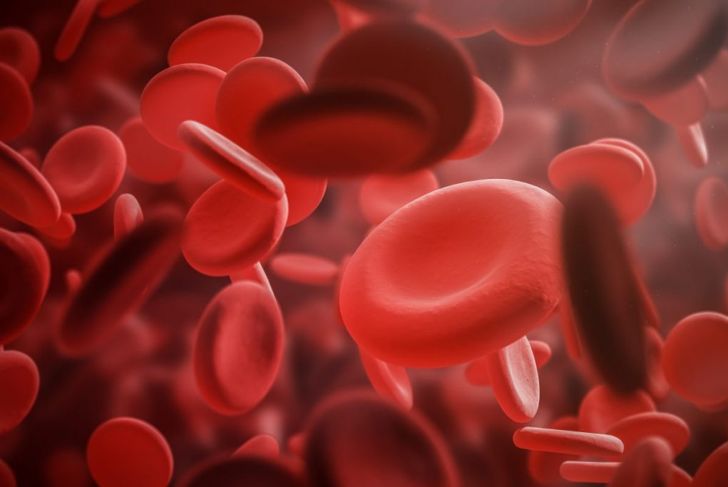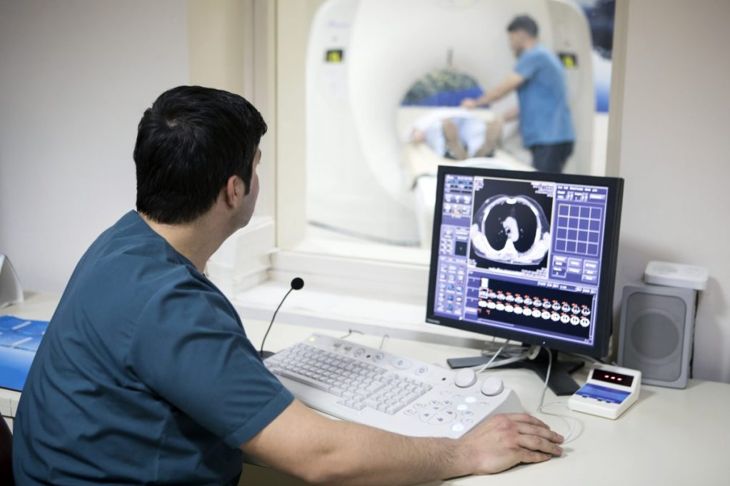Internal bleeding varies significantly from case to case. In some instances, it may be slow and asymptomatic, up to a point. In others, blood loss may occur quickly, with symptoms setting in rapidly. It is possible for internal bleeding to occur with seemingly no cause, though many cases are the result of some physical trauma. However, even if the origin is trauma, internal bleeding may not be easy to identify. In addition, the severity of internal bleeding does not always depend on the amount of bleeding. Areas such as the brain bleeding even slightly can have life-threatening effects.
General Symptoms
Internal bleeding is itself a symptom of a condition or injury, but it can also cause other issues. Depending on the severity and location, internal bleeding can have side effects ranging from irritating to dangerous. General symptoms tend to mimic those of normal exterior bleeding and blood loss. Dizziness, weakness, and low blood pressure are common. A person with internal bleeding may also experience numbness.
Site-Specific Symptoms
Some symptoms of internal bleeding are specific to certain areas of the body. Internal bleeding in the head can lead to headaches, difficulty swallowing, and changes in vision. It can also affect balance and coordination, and cause confusion. If there is internal bleeding in the abdomen, a person may experience bruising around their torso. Key signs of abdominal internal bleeding are dark or bloody stools. Rarely, blood may flow from a cavity such as the ears, nose, or mouth. Internal bleeding in the joints and muscles will typically cause swelling and pain.
Nontraumatic Causes
Many nontraumatic factors can cause internal bleeding. Lifestyle factors such as drinking alcohol, smoking, and using illicit drugs can weaken and irritate the stomach lining. Medications such as blood thinners or anticoagulants can dramatically worsen less severe occurrences of bleeding. The blood vessels can experience minor damage without any trauma or injury, and allow blood to escape. Some people may be born with or develop disorders that can cause them to bleed internally.
Bleeding Disorders
Some children are born with a bleeding disorder that impairs their body’s’ ability to form blood clots. This condition, hemophilia, causes people to bleed longer following injuries and increases the risk of internal bleeding, particularly in the head. Many more people are born with a similar condition, von Willebrand disease. Like hemophilia, von Willebrand disease prevents the body from clotting properly. However, unlike hemophilia, the severity is significantly less. There are three types of von Willebrand disease: types 1, 2, and 3. Each type features an increase in severity and rarity, with type 3 being the most dangerous and the least common.
Trauma
Being aware of the many possible types of physical trauma may help alert a person to the possibility of internal bleeding.
Penetrating trauma involves an object entering the body, piercing through and injuring structures in its path.
Blunt trauma is less obvious but just as dangerous. This includes contusions, abrasions, lacerations, and bone fractures.
Deceleration injuries are most common in incidents such as car crashes. The sudden stop can cause trauma from many sources. In some cases, brain injuries may develop.
Aneurysms
Rarely, an artery’s walls can weaken, and a bulge may appear as the blood continues to flow through. An abnormally large bulge is an aneurysm, and there is a high possibility that the bulge will rupture and cause internal bleeding. Aneurysms can develop in any artery, but the most common areas are in the brain, aorta, legs, and spleen. Though the cause remains unknown, factors such as high blood pressure contribute to the likelihood of developing an aneurysm.
Internal Bleeding in Children
Adults can generally verbalize their symptoms or perform actions that betray internal bleeding. Children may be incapable of doing so, making internal bleeding more difficult to notice. They may cry continually and become impossible to console. In some instances, a child may refuse to eat or may exhibit a poor appetite. Normally athletic and energetic children may appear tired. Like adults, they may have dark or bloody stools. If the head is bleeding internally, the child may appear as though they cannot see and frequently bump into walls and other objects.
What to Do
When the symptoms quickly worsen, it can be a terrifying issue. If anyone suspects a person, including themselves, of experiencing internal bleeding, they should seek medical assistance. Only care in a hospital can stop internal bleeding, so the best thing to do is to sit the affected individual in the proper position. They should be laying down flat with the legs elevated. Emergency services will have the tools and training necessary to properly mitigate the bleeding and transport the individual to a hospital.
Diagnosis
Usually, diagnosing this kind of bleeding requires testing and physical exams. Additionally, diagnosing internal bleeding is as much about determining the cause as it is determining the symptom. Before any scans, physicians may speak to the patient or use blood tests to search for blood thinners or similar issues. Afterward, technicians may use imaging tools such as an x-ray or CT scan to find signs of trauma or bleeding. If they believe that it is the result of an aneurysm, an angiogram helps them observe individual blood vessels.
Treating Internal Bleeding
Once a physician determines the cause of the bleeding, they can begin treatment. When developing a treatment plan, they’ll consider the severity of the cause, the overall health of the patient, and what area, organ, or blood vessel is experiencing the bleeding. Mild internal bleeding may be treatable with rest and symptom control. In severe cases of internal bleeding, medical professionals may surgically stop the bleeding and remove any blood pooling in dangerous locations.

 Home
Home Health
Health Diet & Nutrition
Diet & Nutrition Living Well
Living Well More
More




















